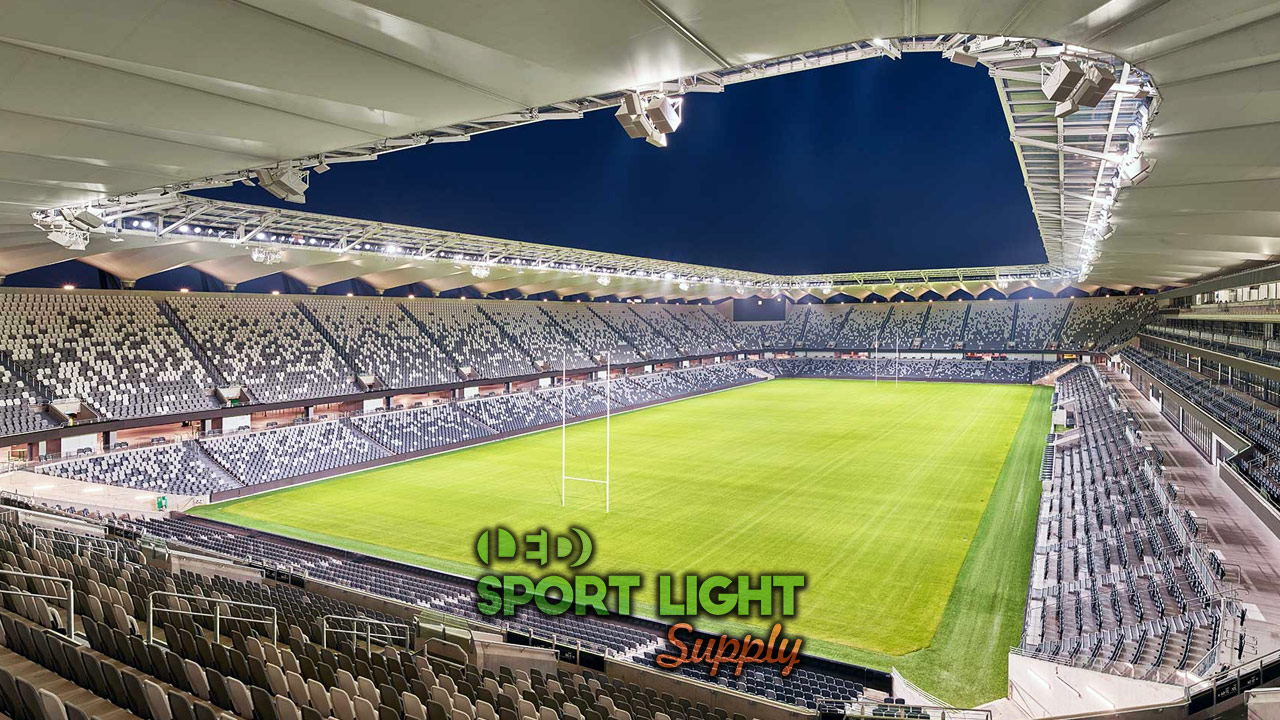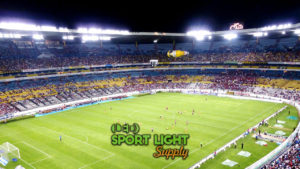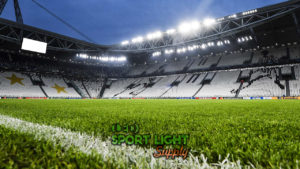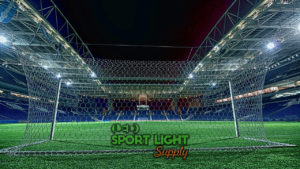What is stadium spill light?
Spill light from a stadium refers to the light that escapes or spills outside of the boundaries of the stadium. This can be caused by the use of floodlights or other lighting systems that are used to illuminate the field or playing surface during night games or events.
Spill light can be a problem for nearby residents or businesses, as it can disrupt their sleep or create an unwanted source of light pollution. Some stadiums have implemented measures to reduce spill light, such as using low-angle floodlights or installing shielding around the lights to direct the light downwards.
Why do we need to reduce the spill light from the stadium?
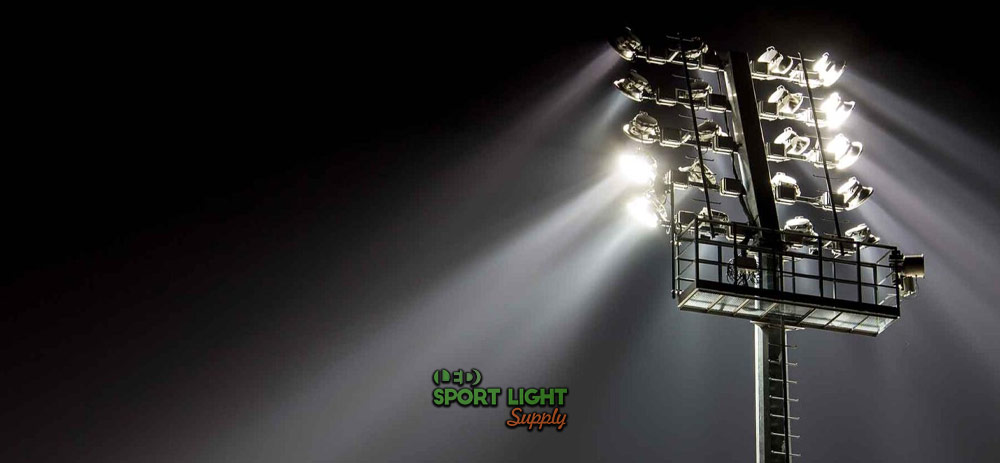
There are several reasons why it may be critical to reduce or eliminate spill light from sports field and stadium lighting:
Light pollution
Spill light can contribute to light pollution, which can disrupt the natural rhythms of plants and animals, as well as interfere with astronomical observations.
Glare
Spill light and glare can be distracting or uncomfortable for spectators or players, potentially impacting their ability to watch or participate in the game.
Energy efficiency
Reducing spill light can help to reduce energy consumption, as less light is being wasted on areas outside the intended coverage area.
Environmental impacts
Reducing energy consumption can also have a positive impact on the environment, as it can help to reduce greenhouse gas emissions.
Community relations
Reducing spill light can maintain good relations with the surrounding community. Spill light can be a nuisance for neighbors, and addressing this issue can help to maintain positive relationships.
This article will provide you with the top ways to reduce spill light caused by stadium lighting.
How to eliminate spill lights and glare from stadium and sports field?
1. Identify the sources of spill light and glare
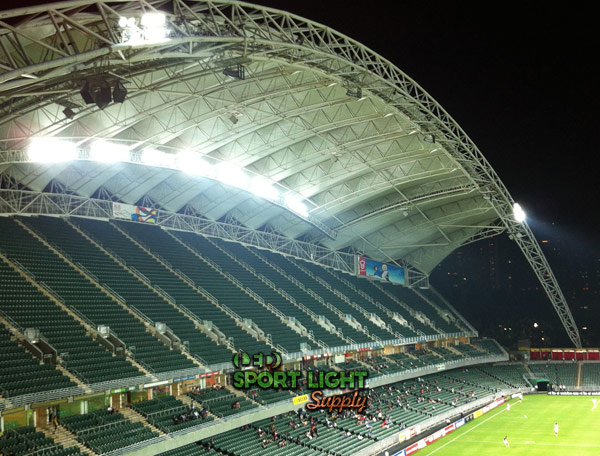 To analyze the lighting design and identify the sources of spill light and glare, you can follow these steps:
To analyze the lighting design and identify the sources of spill light and glare, you can follow these steps:
- Determine the coverage area that the lighting is intended to illuminate. This may be the playing field, spectator seating, or other areas within the stadium.
- Examine the layout and placement of the light fixtures. Pay attention to the angle and orientation of the fixtures, as well as their distance from the ground.
- Identify any areas where light is spilling over into areas outside the intended coverage area. This may be due to the placement or angle of the fixtures, or the intensity of the light being emitted.
- Look for sources of glare, such as fixtures that are directly facing the viewing area or that are positioned at a low angle.
- Take measurements of the light levels in different areas of the stadium, both inside and outside the intended coverage area. This can help to identify areas where the light levels are too high or too low.
- Consider the impact of external factors, such as the reflection of light off of surrounding surfaces or the presence of other light sources in the area.
By analyzing the lighting design and identifying the sources of spill light and glare, you can develop a plan to address these issues and improve the overall lighting quality in the stadium.
2. Use shielding or louvers to block the spill light
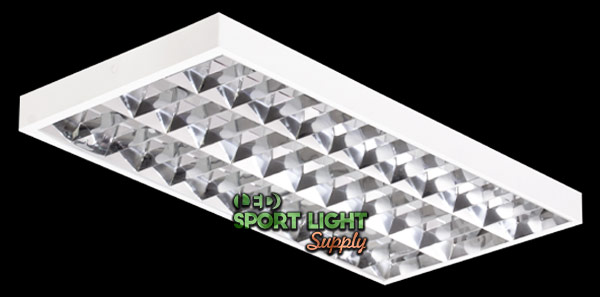 Shielding or louvers can be effective at blocking spill light from reaching areas outside the intended coverage area. Here are some tips for using these techniques:
Shielding or louvers can be effective at blocking spill light from reaching areas outside the intended coverage area. Here are some tips for using these techniques:
Shielding
Shielding refers to the use of physical barriers or screens to block light from reaching certain areas. This could be accomplished by installing fences or screens around the perimeter of the stadium, or by using trees or other landscaping elements to block light.
Louvers
Louvers are slats or slatted screens that can be used to direct light in a specific direction. By using louvers on the light fixtures, you can control the direction of the light and prevent it from spilling over into surrounding areas.
Combination
You can also use a combination of shielding and louvers to block spill light. For example, you could install louvers on the light fixtures and use fences or screens to further block the light.
Shielding or louvers may not be a suitable solution in all cases, as they may also block some of the intended light from reaching the playing field or spectator areas.
3. Consider using LED lights
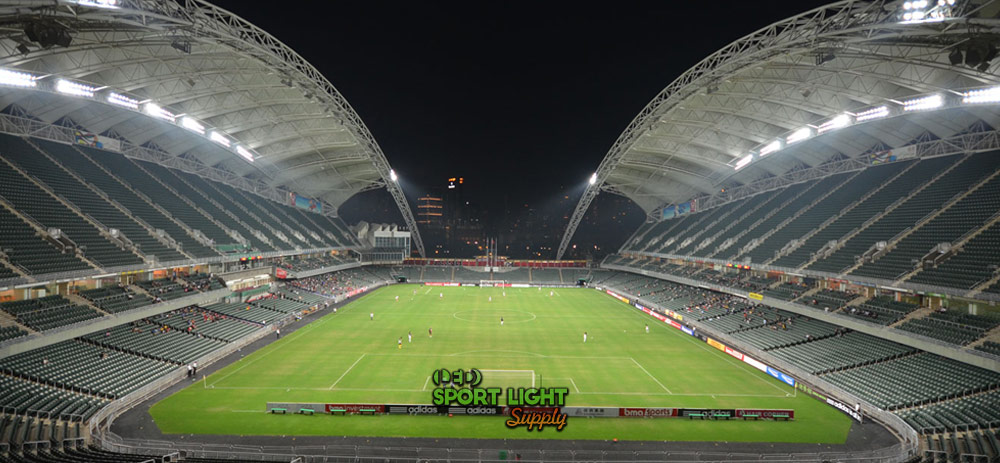
LED lights are a type of solid-state lighting that use light-emitting diodes (LEDs) to produce light. LED lights are becoming increasingly popular for use in sports field and stadium lighting due to their many benefits, including:
Energy efficiency
LED lights are highly energy efficient, consuming up to 75% to 85% less energy than traditional metal halide or high pressure sodium lights. This can help to reduce energy costs and greenhouse gas emissions.
Long lifespan
LED lights have a much longer lifespan than traditional lights, typically lasting up to 120,000 hours or more. This can help to reduce maintenance costs and the frequency of bulb replacements.
Low spill light and glare
LED lights tend to produce less spill light and glare than traditional lights, making them a good choice for minimizing these issues.
Durability
LED lights are more durable and resistant to vibration and shock, making them suitable for use in sports environments.
Versatility
LED lights come in a wide range of colors, beam angles, and wattages, allowing for more flexibility in lighting design.
LED lights are a good choice for sports field and stadium lighting due to their energy efficiency, long lifespan, low spill light and glare, and durability.
4. Use a lower wattage flood lights or a more focused beam angle
Using a lower wattage flood light or a more focused beam angle can help to reduce the overall intensity of the light and minimize spill light. Here are some tips for using these techniques:
Lower wattage flood light
Choosing a lower wattage flood light can help to reduce the overall intensity of the light. This is particularly effective when used in combination with other measures, such as shielding or louvers, to further reduce spill light.
Focused beam angle
Using a more focused beam angle can also help to reduce the intensity of the light and minimize spill light. For example, using a narrow beam angle (such as 10 degrees) will direct the light more precisely and reduce the amount of light that spills over into surrounding areas.
Using a lower wattage flood light or a more focused beam angle may also reduce the overall coverage area of the lighting.
5. Install light-colored reflectors to bounce light back towards the field or playing surface
Installing light-colored reflectors can help to bounce light back towards the field or playing surface, reducing spill light and glare. Here are some tips for using reflectors:
Choose light-colored reflectors
Light-colored reflectors, such as those made of aluminum or other highly reflective materials, are more effective at bouncing light back towards the field or playing surface. Darker colored reflectors will absorb more light, reducing their effectiveness.
Position the reflectors properly
The position of the reflectors can have a significant impact on their effectiveness. In general, reflectors should be positioned at an angle that is perpendicular to the light source. This will allow the light to be reflected back towards the field or playing surface rather than spilling over into surrounding areas.
Use multiple reflectors
Using multiple reflectors can help to further bounce light back towards the field or playing surface. This can be particularly effective when combined with shielding or louvers to block spill light from other directions.
Consider the size and shape of the reflectors
The size and shape of the reflectors can also impact their effectiveness. Larger reflectors will generally be more effective at bouncing light back towards the field or playing surface, while smaller reflectors may not be as effective.
Light-colored reflectors can be an effective tool for reducing spill light and glare in sports field and stadium lighting.
6. Install dimming controls
Installing dimming controls can allow you to adjust the light levels in a sports field or stadium based on the time of day or the specific activity being performed. This can be an effective way to reduce spill light and glare, as well as improve energy efficiency. Here are some tips for using dimming controls:
Choose the right type of dimming control
There are several types of dimming controls available, including manual dimming controls, automated dimming controls, and smart controls. It’s critical to choose the type of dimming control that best meets the needs of your specific application.
Set appropriate light levels
When setting the light levels using dimming controls, it’s necessary for us to consider the specific activity being performed and the time of day. For example, you may want to set the light levels higher during a night game, while lower light levels may be more appropriate during daytime practices or events.
Consider using a lighting control system
A lighting control system can allow you to centrally control the light levels in a sports field or stadium using a computer or other device. This can make it easier to adjust the light levels based on the time of day or the specific activity being performed.
Monitor energy usage
It’s essential to monitor energy usage when using dimming controls to ensure that energy is being used efficiently. This can help to identify areas where the light levels can be further adjusted to reduce energy consumption.
Dimming controls can be an effective tool for reducing spill light and glare and improving energy efficiency in sports field and stadium lighting.
7. Use a lighting control system to automatically adjust the lighting levels
A lighting control system can be used to automatically adjust the lighting levels in a sports field or stadium based on the time of day and ambient light conditions. This can be an effective way to reduce spill light and glare, as well as improve energy efficiency. Here are some tips for using a lighting control system:
Choose the right lighting control system
There are several types of lighting control systems available, including standalone systems, networked systems, and smart systems. We can choose the type of lighting control system that best meets the needs of your specific application.
Set up automated lighting schedules
A lighting control system can be programmed to automatically adjust the light levels based on the time of day and the specific activity being performed. For example, the light levels may be set higher during a night game, while lower light levels may be more appropriate during daytime practices or events.
Monitor ambient light levels
Some lighting control systems can also be configured to adjust the light levels based on ambient light conditions. For example, the light levels may be increased on cloudy days or during times when there is less natural light available.
Monitor energy usage
We may monitor energy usage when using a lighting control system to ensure that energy is being used efficiently. This can help to identify areas where the light levels can be further adjusted to reduce energy consumption.
A lighting control system can be an effective tool for reducing spill light and glare and improving energy efficiency in sports field and stadium lighting.
8. Utilize glare control measures such as hoods, shields, or reflectors on the fixtures
Utilizing glare control measures such as hoods, shields, or reflectors on the fixtures can help to reduce spill light and glare in sports field and stadium lighting. Here are some tips for using these techniques:
Use hoods or shields
Hoods or shields can be installed on the fixtures to block the light from directly reaching the viewer’s eyes. This can help to reduce glare and improve visibility for spectators or players.
Use reflectors
Reflectors can be used to bounce light back towards the field or playing surface rather than allowing it to spill over into surrounding areas. This can help to reduce spill light and glare.
Consider the placement of the fixtures
The placement of the fixtures can also impact the amount of spill light and glare. For example, positioning the fixtures at a higher angle can reduce the amount of direct light reaching the viewer’s eyes and reduce glare.
Use low-glare or shielded fixtures
Low-glare or shielded fixtures are specifically designed to minimize spill light and glare. These fixtures may be a good choice in areas where spectators or players may be directly facing the light source.
Utilizing glare control measures such as hoods, shields, or reflectors can be an effective way to reduce spill light and glare in sports field and stadium lighting.
9. Position the fixtures at a higher angle
Positioning the fixtures at a higher angle can help to reduce the amount of direct light reaching the viewer’s eyes, reducing spill light and glare in sports field and stadium lighting. Here are some tips for positioning the fixtures at a higher angle:
Determine the optimal angle
The optimal angle will depend on the specific layout and characteristics of the sports field or stadium. In general, a higher angle will reduce the amount of direct light reaching the viewer’s eyes and reduce glare.
Use adjustable fixtures
Adjustable fixtures can be angled up or down to achieve the desired lighting effect. This can be an effective way to fine-tune the angle of the fixtures and minimize spill light and glare.
Consider the impact on coverage
We can consider the impact that adjusting the angle of the fixtures will have on the overall coverage area. A higher angle may reduce the amount of light reaching certain areas, so we should ensure that the lighting is still sufficient for the specific activity being performed.
Use other glare control measures
In addition to adjusting the angle of the fixtures, you may also want to consider using other glare control measures such as hoods, shields, or reflectors to further reduce spill light and glare.
Positioning the fixtures at a higher angle can be an effective way to reduce spill light and glare in sports field and stadium lighting.
10. Consider using low-glare or shielded fixtures
Using low-glare or shielded fixtures in areas where spectators or players may be directly facing the light source can help to reduce spill light and glare in sports field and stadium lighting. Here are some tips for using these types of fixtures:
Choose low-glare or shielded fixtures
Low-glare or shielded fixtures are specifically designed to minimize spill light and glare. These fixtures may be a good choice in areas where spectators or players may be directly facing the light source.
Consider the placement of the fixtures
The placement of the fixtures can also impact the amount of spill light and glare. For example, positioning the fixtures at a higher angle can reduce the amount of direct light reaching the viewer’s eyes and reduce glare.
Use other glare control measures
In addition to using low-glare or shielded fixtures, you may also want to consider using other glare control measures such as hoods, shields, or reflectors to further reduce spill light and glare.
Monitor the lighting
We need to monitor the lighting in areas where low-glare or shielded fixtures are used to ensure that they are providing adequate illumination.
Using low-glare or shielded fixtures can be an effective way to reduce spill light and glare in sports field and stadium lighting, particularly in areas where spectators or players may be directly facing the light source.
11. Use trees or other landscaping elements to block light from spilling into surrounding areas
Using trees or other landscaping elements to block light from spilling into surrounding areas can be an effective way to reduce spill light and glare in sports field and stadium lighting. Here are some tips for using trees or other landscaping elements:
Choose the right plants
Trees or other plants that are tall or have dense foliage can be effective at blocking light. We can choose plants that are appropriate for the local climate and soil conditions.
Consider the placement of the plants
The placement of the plants can have a significant impact on their effectiveness at blocking light. In general, plants should be positioned around the perimeter of the sports field or stadium to block light from spilling over into surrounding areas.
Use multiple plants
Using multiple plants can help to further block light from spilling into surrounding areas. This can be particularly effective when combined with other measures such as shielding or louvers.
Monitor the plants
We should monitor the plants to ensure that they are healthy and growing properly. If the plants become overgrown or die, they may no longer be effective at blocking light.
Using trees or other landscaping elements can be an effective way to reduce spill light and glare in sports field and stadium lighting.
12. Install fences or other physical barriers to block the spill light
Installing fences or other physical barriers can be an effective way to block spill light in sports field and stadium lighting. Here are some tips for using fences or other physical barriers:
Choose the right type of barrier
Fences or screens made of materials such as wood, metal, or plastic can be effective at blocking light.
Consider the height of the barrier
The height of the barrier will impact its effectiveness at blocking light. In general, a taller barrier will be more effective at blocking light from spilling over into surrounding areas.
Use multiple barriers
Using multiple barriers can help to further block light from spilling into surrounding areas. This can be particularly effective when combined with other measures such as shielding or louvers.
Monitor the barriers
We can monitor the barriers to ensure that they are in good condition and continue to effectively block light.
Installing fences or other physical barriers can be an effective way to reduce spill light and glare in sports field and stadium lighting.
13. Use window treatments or blackout curtains to block light from entering buildings
Using window treatments or blackout curtains can be an effective way to block light from entering buildings or homes in the surrounding area of a sports field or stadium. Here are some tips for using window treatments or blackout curtains:
Choose the right type of window treatment
There are several types of window treatments available, including blinds, shades, and curtains. We may choose a window treatment that is appropriate for the specific needs of the building or home.
Consider the material
The material of the window treatment can impact its effectiveness at blocking light. Heavy, opaque materials such as blackout curtains are more effective at blocking light than lighter, sheer materials.
Install the window treatment properly
It’s critical to properly install the window treatment to ensure that it is effective at blocking light. This may involve using brackets or other mounting hardware to hold the window treatment in place.
Using window treatments or blackout curtains can be an effective way to reduce spill light and glare in the surrounding area of a sports field or stadium.
14. Consider using low-profile lighting solutions
Exterior-grade LED ribbon lights or other low-profile lighting solutions that direct light downward rather than outward can be an effective way to reduce spill light and glare in sports field and stadium lighting. Here are some tips for using these types of lighting solutions:
Choose low-profile lighting solutions
Exterior-grade LED ribbon lights or other low-profile lighting solutions are designed to be installed close to the ground and direct light downward rather than outward. This can help to reduce spill light and glare.
Consider the placement of the lighting
The placement of the lighting can also impact the amount of spill light and glare. In general, low-profile lighting solutions should be positioned around the perimeter of the sports field or stadium to minimize spill light.
Use other spill light reduction measures
In addition to using low-profile lighting solutions, you may also want to consider using other measures such as shielding or louvers to further reduce spill light and glare.
Monitor the lighting
We can monitor the lighting to ensure that it is providing adequate illumination and is not causing excessive spill light or glare.
Using exterior-grade LED ribbon lights or other low-profile lighting solutions can be an effective way to reduce spill light and glare in sports field and stadium lighting.
15. Work with a lighting designer or engineer to develop a custom lighting plan
Working with a lighting designer or engineer to develop a custom lighting plan can be an effective way to reduce spill light and glare in sports field and stadium lighting. Here are some tips for working with a lighting designer or engineer:
Identify the specific needs and challenges of the site
A lighting designer or engineer can help to identify the specific needs and challenges of the site, such as the layout of the sports field or stadium, the type of activity being performed, and the surrounding environment. This information can be used to develop a custom lighting plan that takes into account the specific needs of the site.
Consider the lighting design options
The lighting designer or engineer can provide guidance on the various lighting design options that are available, such as LED lights, low-glare fixtures, or lighting control systems. They can help to identify the most appropriate solutions for the specific needs of the site.
Develop a custom lighting plan
Based on the specific needs and challenges of the site, the lighting designer or engineer can develop a custom lighting plan that takes into account the various lighting design options and addresses spill light and glare reduction.
Monitor the lighting
We can monitor the lighting to ensure that it is meeting the needs of the site and that spill light and glare are being effectively reduced. The lighting designer or engineer can provide guidance on how to monitor the lighting and make any necessary adjustments.
Working with a lighting designer or engineer can be an effective way to develop a custom lighting plan that takes into account the specific needs and challenges of a sports field or stadium and reduces spill light and glare.
Conclusion
In conclusion, there are several measures that can be taken to reduce spill light and glare in sports field and stadium lighting. Some options include using shielding or louvers to block the spill light, installing dimming controls to adjust the light levels, using low-glare or shielded fixtures, positioning the fixtures at a higher angle, using trees or other landscaping elements to block light, installing fences or other physical barriers, using window treatments or blackout curtains, and working with a lighting designer or engineer to develop a custom lighting plan. By implementing these measures, it is possible to effectively reduce spill light and glare in sports field and stadium lighting.

